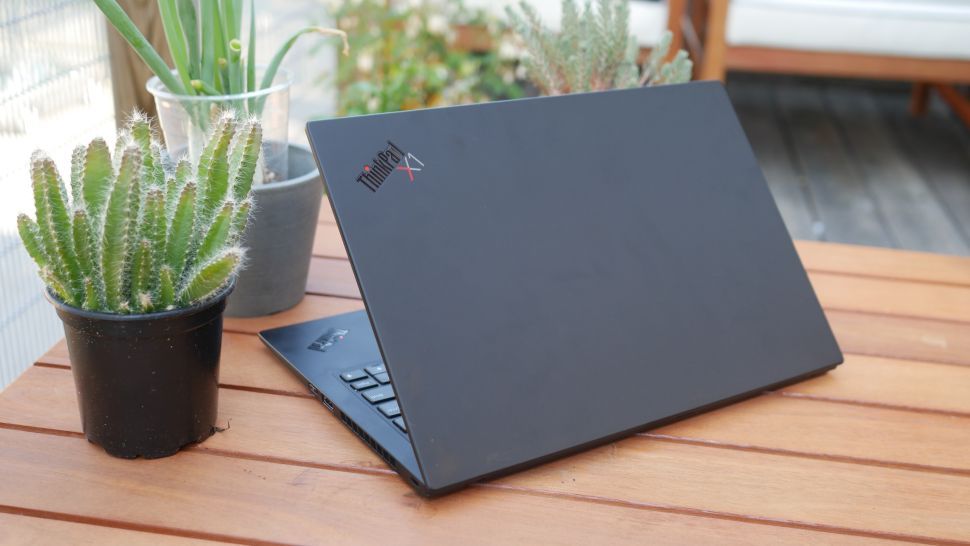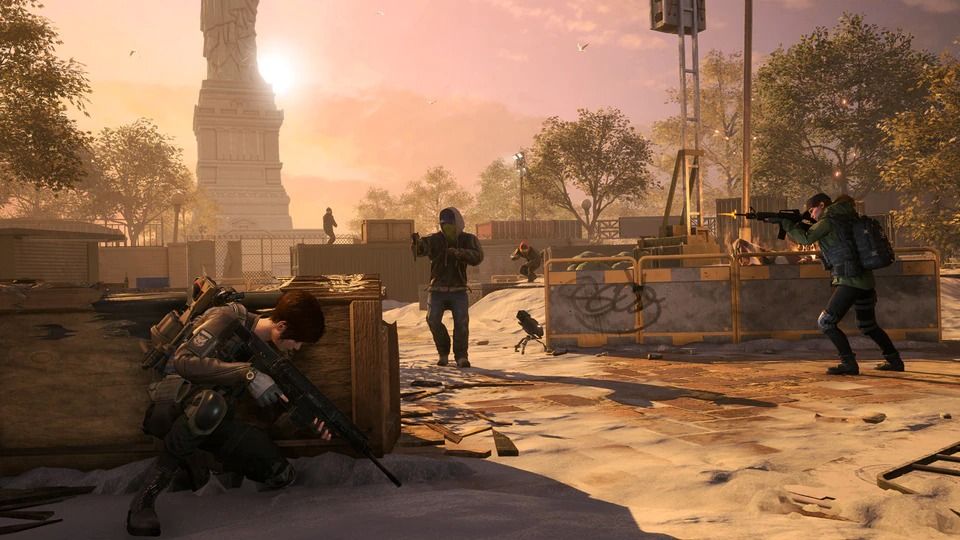Laptops. There are just so many of them. But what’s the best laptop for you? Is it a business notebook, a powerful gaming laptop, or a Chromebook? We know the sheer number of choices can be overwhelming, which is why we made this list.
We’ve created this handy, dandy guide so you’ll know all the ins and outs of your prospective system before you make the decision to hit the buy button. From advice on choosing screen size, to selecting between an SSD and HDD, to insider scoops on where to find the best prices on laptops, here are some essential tips for finding the right system for you.
Over the course of a year, we review over 150 laptops covering every price point and use case. Whether you’re looking for a productivity workhorse, a badass gaming system or a multimedia machine to kick back and watch a movie or two, we can help you find your ideal match.
In order to make our Best Laptop of 2022 list, the system needs to score at least 4 out of 5 stars on our reviews and deliver on the things shoppers care about most. In our evaluations, we focus on design and comfort, display quality, the keyboard and touchpad, performance, battery life and especially value.
What are the best laptops right now?
The Dell XPS 13 is currently our top overall pick for best laptop of 2022. Powered by a 11th Gen Intel Core i7 processor and integrated Intel Iris Xe graphics, the 1080p version of the laptop is ideal for work, play and light content creation. And be sure to check out the OLED edition with it’s bright, vivid display, the laptop is also great for watching videos. Plus, it’s also incredibly slim and light making it an ideal laptop for mobile professionals.
Those in the market for a convertible should give the Dell XPS 13 2-in-1 a look. If 13-inches is too small, we suggest the Dell XPS 17, which also earned a spot on this list thanks to its powerful performance that makes it ideal for students, mobile and creative professionals.
For our Apple aficionados, the new must-have is the latest MacBook Air now with the company’s new M2 processor. If you’re a power user or content creator, the MacBook Pro 13 can stand up to your workload.
And if you’re in the market for an extra-large Chromebook, check our review of the Acer Chromebook 317, the world’s first 17-inch Chrome OS laptop.
See our picks for best laptops below.
The best laptops you can buy today
The Dell XPS 13 OLED is what happens when the best laptop meets the latest display technology. Combining the two creates something close to magic — an ultra-portable device capable of running most tasks while providing a cinema-like viewing experience. Everything we love about the other XPS configurations remains, including the fast performance, striking design and top-rate touchpad.
The latest XPS 13 model debuts a gorgeous OLED panel that provides rich picture quality for when you’re streaming movies at home or editing videos for work. Is it worth the tradeoff to battery life? If you need a high-res display, then yes. The 3.5K OLED display outlasted the 4K IPS config in our battery test and is capable of producing a wider range of colors. Equipped with an Intel Core i7-1185G7 CPU with 16GB of RAM, the XPS 13 is small but mighty.
Overall, the XPS 13 OLED brings an excellent display upgrade to what was already our favorite laptop, and it does so without too many sacrifices.
See our full Dell XPS 13 OLED (2021) review.
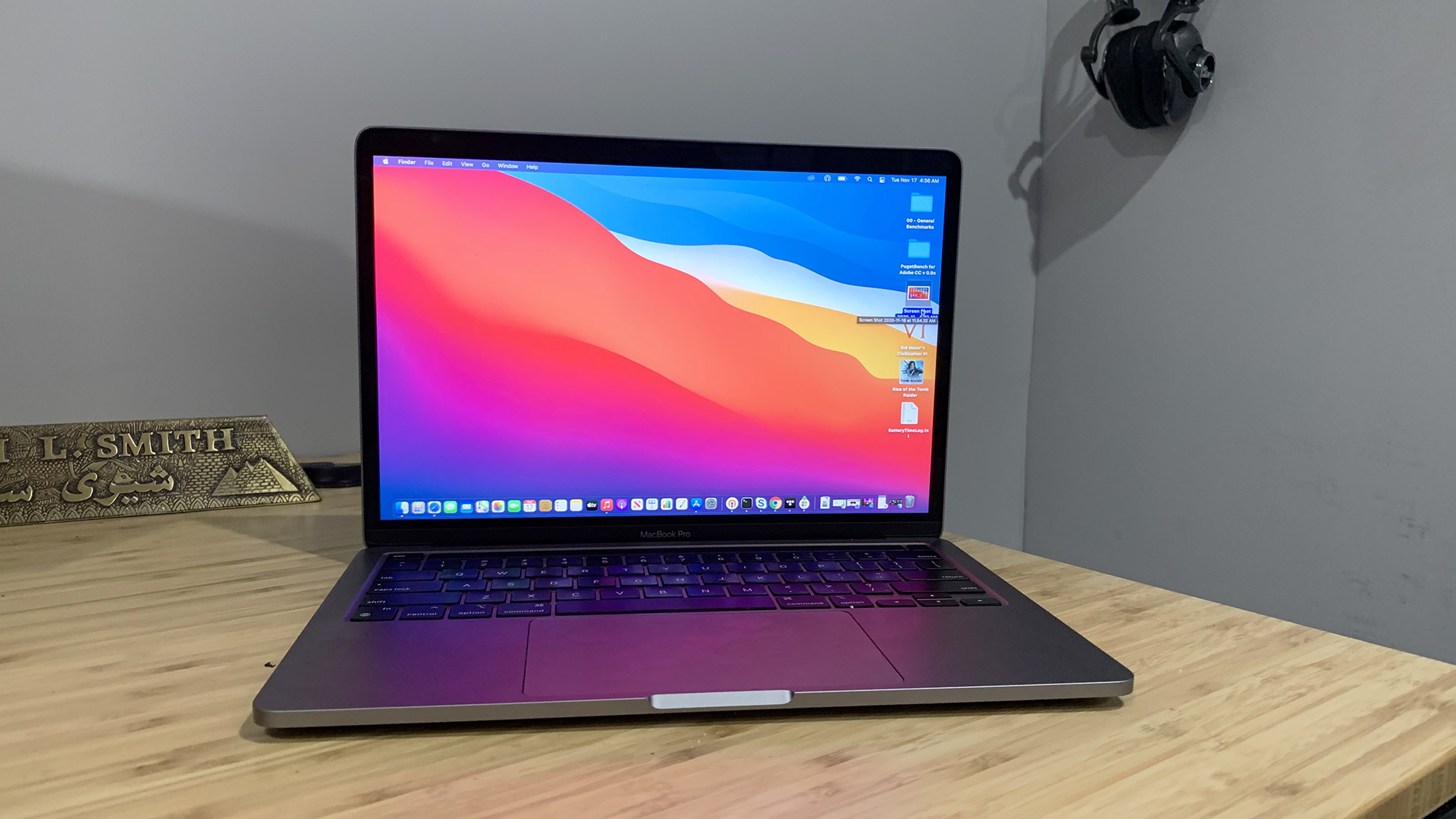
The next chapter in Apple computing continues and the company’s bet on custom silicon continues to hit the jackpot. M2 is 18% more powerful than its ancestor with an 8-core CPU. M2 is also bringing a new 10-core GPU that’s 35% faster than the previous model. And yes, M2 definitely continues its Windows PC. And if that isn’t enough to get you excited, Apple has found a way to improve on the laptop’s power efficiency, delivering over 18 hours of battery life.
It delivers impressive performance and has the longest battery life I’ve seen on a Mac. If that’s not enough, paired with Ventura, you get blistering webpage load times and a better webcam experience –– all thanks to Apple Silicon. In short, the new MacBook Pro is everything Apple said and more.
See our full Apple MacBook Pro (13-inch, M2, 2022) review.
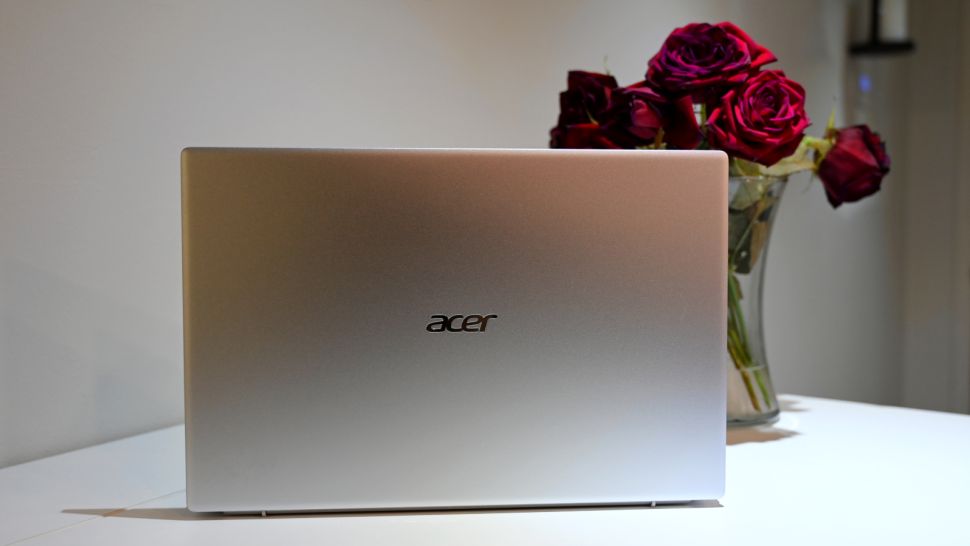
The Acer Swift 3 is an ultra-thin, sleek, silver, peppy performer meant to help college-bound students transition to the next level of their education and make life much smoother. It has a nice design with some cool chrome accents that give a touch of flair. You get decent performance out of the 11th Gen Intel Core i7 CPU and solid rendering from the Intel Iris Xe GPU.
The Swift 3 is a solid, budget-friendly ultra-thin laptop and travel partner that won’t slow you down. It’s a tiny workhorse that performed well on a number of our benchmarks. Plus, it has staying power with over 10 hours of battery life. Plus, it’s got premium good looks and a rather comfortable keyboard. The laptop does have one flaw however, its display which isn’t as bright as we would like. But for the price, it’s a minor quibble for a sub-$1,000 laptop.
See our full Acer Swift 3 review.
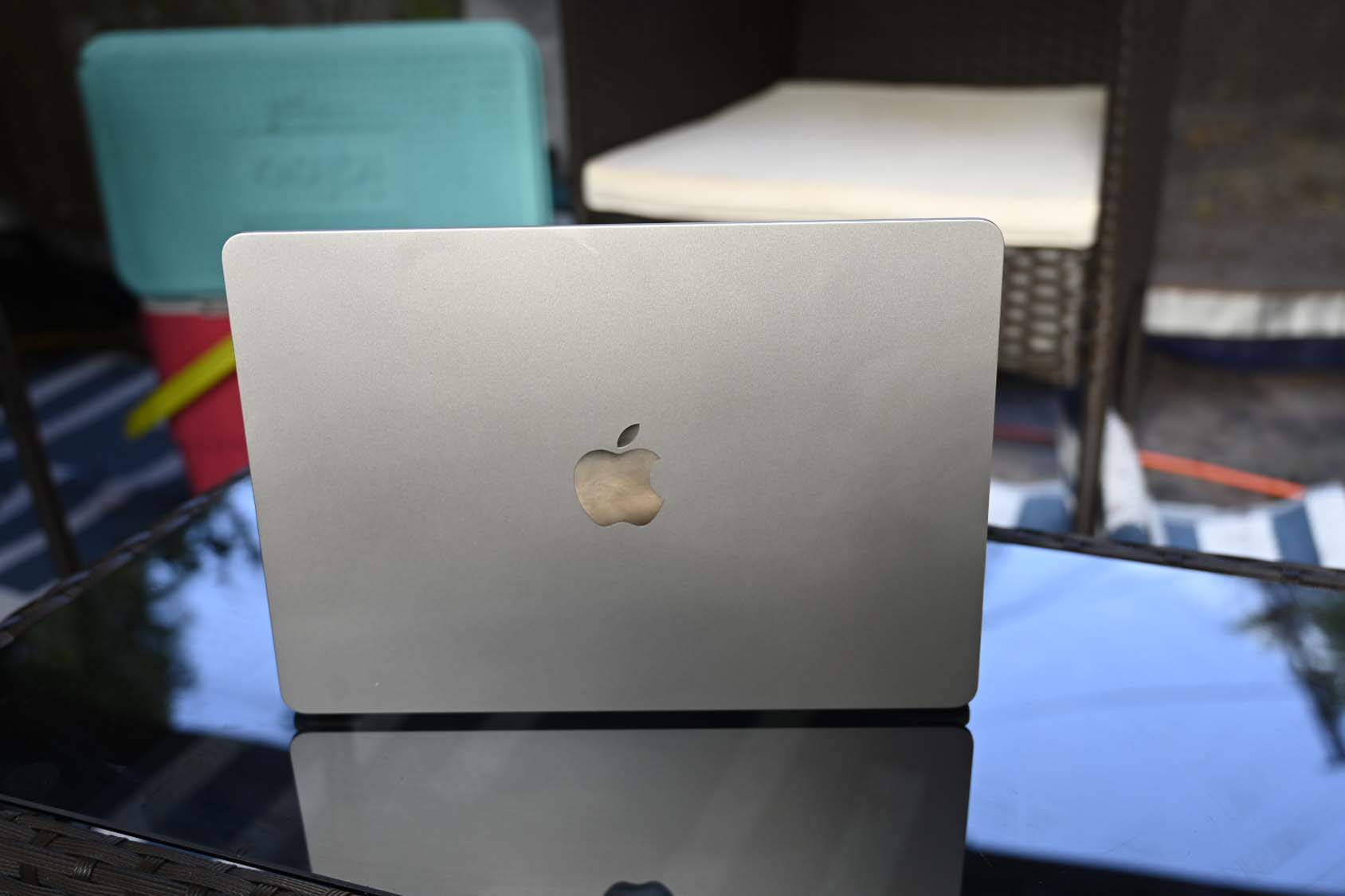
The latest chapter in the MacBook Air’s saga is compelling to say the least. The laptop eschews the wedge design of old for a look that puts it squarely in MacBook Pro territory. But staying true to its name, the Air is 20% smaller than its predecessor in terms of volume. You even get some snazzy new colors to choose from this time around. Apple’s also added a few other new goodies such as a 1080p webcam, a new speaker setup and a bigger display.
But the real star of the show is the Apple’s M2 chip, which offers great performance for an ultraportable laptop. It’s faster and more powerful than the previous model and is ideal for anyone looking for a super-light workhorse. Plus, it lasted over 14 hours on our battery test and has fast charging. It’s a tantalizing mix of portability and performance that makes it perfect for work and play.
See our full MacBook Air M2 review.

The new XPS 13 2-in-1 is without question among the best 2-in-1 laptops you can buy. That shouldn’t come as a surprise. Dell smartly used the XPS 13 as a blueprint for the XPS 13 2-in-1, an almost identical laptop, but with the ability to transform into a tablet.
New features to this year’s edition make the XPS 13 2-in-1 more appealing than before. Intel’s 11th Gen Tiger Lake CPUs with Iris Xe Graphics deliver a solid performance and graphics boost from the previous chips. The XPS 13 2-in-1 also received a quality-of-life improvement in the way of an IR camera, so you can stop typing in passwords. And although the design is unchanged, a new Frost lid matches the white color option.
It’s a great choice for those looking for versatility along with performance and endurance.
See our full Dell XPS 13 2-in-1 (2020) review.
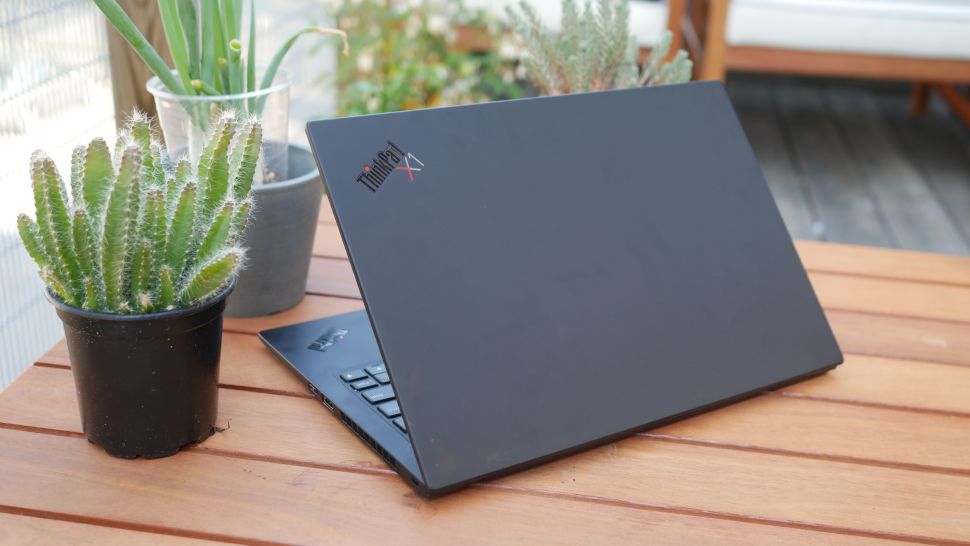
(opens in new tab)
Lenovo made our favorite business laptop even better by improving its speakers, giving it a svelte carbon fiber texture and adding some useful security features, including a webcam shutter and IR camera. You even get far-field microphones in case you want to use a digital assistant.
On top of that, you get strong performance and a fast SSD. That means if you’re working on large spreadsheets with plenty of calculations, the X1 Carbon will handle them with aplomb. You can also expect long battery life (on the 1080p model) and two gorgeous, 1080p and 4K display options, all in an impossibly lightweight chassis.
But it’s those classic ThinkPad X1 features — a durable (military tested) chassis, best-in-class keyboard and stylish black/red aesthetics — that carry the X1 Carbon to greatness.
Read our full Lenovo ThinkPad X1 Carbon review.
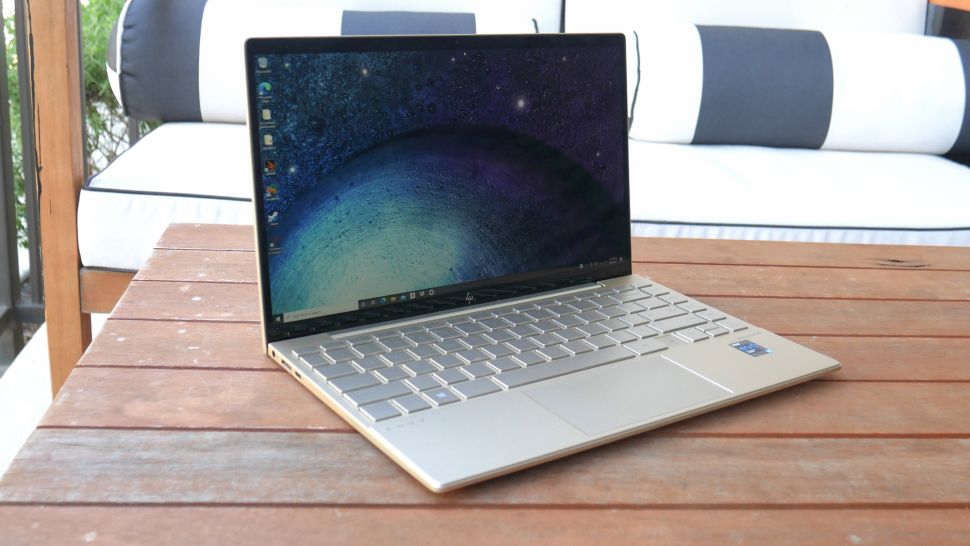
The HP Envy 13 continues its long reign as the king of sub-$1,000 laptops. The latest iteration of the laptop keeps all of the things we love about it, including its premium design, surprisingly powerful performance and serious battery life. What’s new is the addition of Intel’s 11th Gen processors and integrated graphics. Everything else about the Envy 13 is either better or as good as it was before. The 1080p display is bright and vivid, the keyboard is a joy to type on, and you still get a Thunderbolt 4 input along with two USB Type-A ports for connecting mice, keyboards or webcams.
HP addressed almost every shortcoming of the previous Envy 13, a laptop that already had very few faults. Bringing an 11th Gen Intel CPU onboard has improved a winning formula. Our Core i5 model impressed in real-world and benchmark tests, and the Envy 13 lasted for almost 11 hours on a charge.
See our full HP Envy 13 (2021) review.
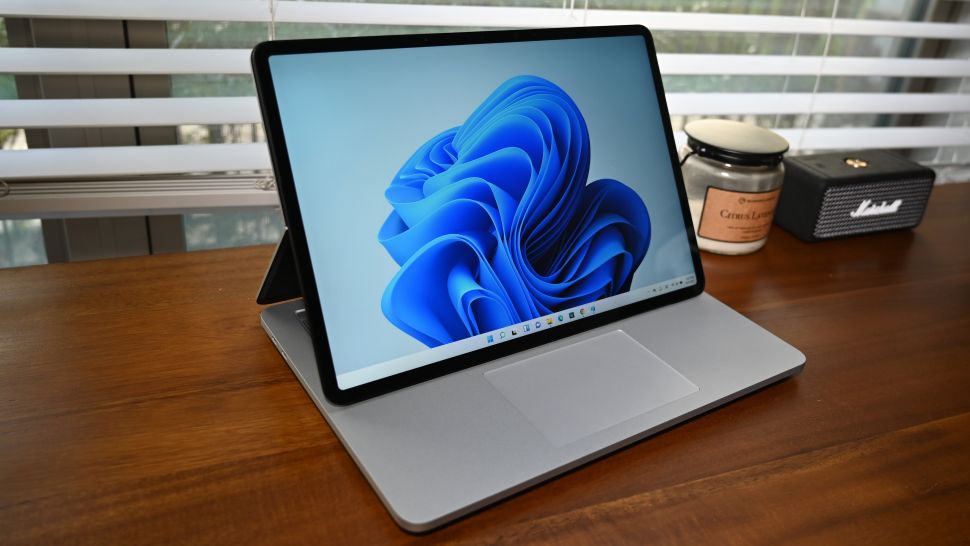
The Microsoft Surface Laptop Studio is an excellent choice for creative professionals. It can be transformed into a digital drawing board, but it does so without compromising the standard laptop mode. This flexibility, along with excellent performance and long battery life, makes the Surface Laptop Studio a compelling option for creative professionals. Add in a fantastic keyboard/touchpad combo, powerful speakers, and a 1080p webcam, and the Surface Laptop Studio finds its place as one of the best laptops for creatives and anyone else searching for an extra-versatile laptop.
With its Core i7-11370H CPU and RTX 3050 Ti graphics, the Surface Laptop Studio can handle the most demanding tasks and even play some recent AAA games. Despite having so much power under the hood, the Laptop Studio lasts a full day on a charge, and its 14.4-inch display is excellent, with the 120Hz refresh rate giving it an edge over the competition. Microsoft didn’t just get the big things right — it put care into each element of this laptop. The keyboard and touchpad are fantastic, the speakers are crisp and powerful, and even the webcam is decent.
See our full Microsoft Surface Laptop Studio review.
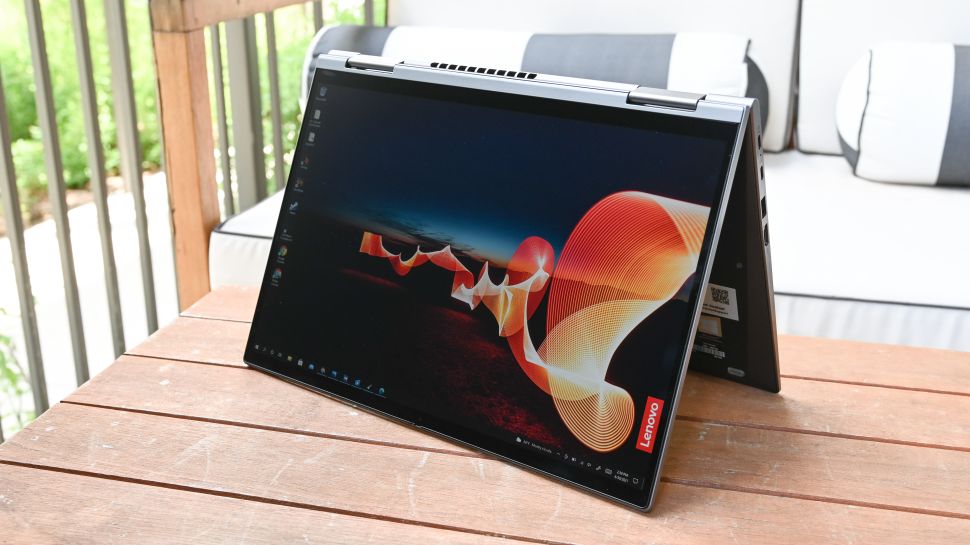
If you need a portable 2-in-1 laptop — for business or otherwise — and aren’t on a tight budget, the X1 Yoga Gen 6 is one to consider. There simply aren’t many weaknesses to this convertible. The 11th Gen Intel CPUs provide fast performance and epic endurance, while the sleek chassis is slim enough to take on a business trip or to the cafe when you’re working remotely. The X1 Yoga separates itself from others in the field with a bounty of extra features, from the IR camera and fingerprint sensor to the garaged stylus and webcam cover.
If you’re a business user who wants a portable 2-in-1 laptop, or an IT admin setting your team up with the very best hardware, then the ThinkPad X1 Yoga is a first-rate choice. It even lasts for nearly 15 hours on a charge. These perks are packaged in a sleek aluminum chassis with a convenient 2-in-1 design and a handy stylus slot.
See our full Lenovo ThinkPad X1 Yoga (Gen 6) review.
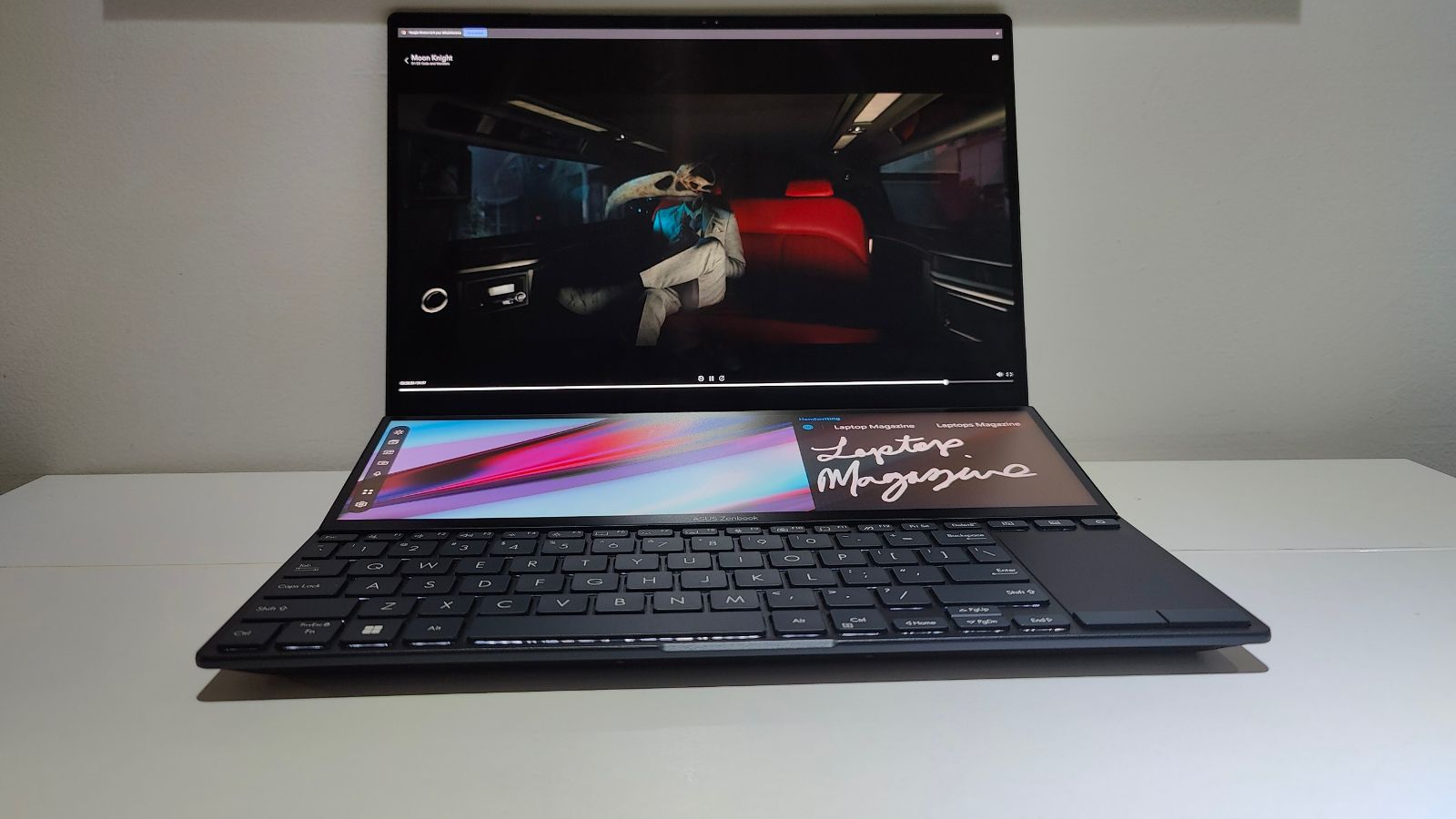
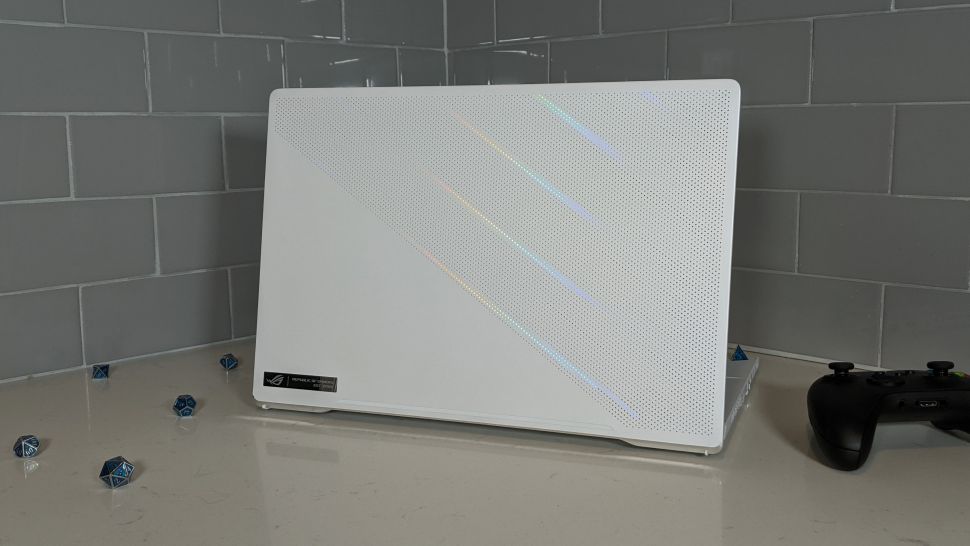
The Asus Zenbook Pro 14 Duo OLED features the world’s first 14.5-inch, 2.8K 120Hz OLED laptop display. Like its larger 15-inch variant, is a beautifully built, wow-factor laptop for content creators that will grab everyone’s attention wherever you choose to set up shop for the day. It also comes with an excellent, highly accurate stylus that is a joy to use.
An Nvidia GeForce RTX 3050Ti GPU allows the system to perform photo and video editing tasks as well as some light gaming. Meanwhile the 12th Gen Intel processor can handle your multitasking needs. Overall, it’s a perky performer which could make it perfect for on-the-go content creators who will put that stylus to good use.
See our full Asus Zenbook Pro 14 Duo OLED review.
The Zephyrus G15 offers amazing performance from its AMD Ryzen 9 5900HS processor and Nvidia GeForce RTX 3080 GPU. It even boasts a similarly long-lasting battery life, a clicky keyboard, a 15.6-inch, 1440p display and a set of powerful speakers wrapped up in an even more elegant Moonlight White design.
The Asus ROG Zephyrus G15 (GA503Q) totes around some of the most powerful components you can get right now. Almost every part of this machine is surprisingly great and well worth the money you’ll be paying. Plus, it lasted 8 hours and 6 minutes on the Laptop Mag battery test, crushing the premium gaming laptop average. Regardless, the Zephyrus G15 is one of the few best gaming laptops that you can buy with an RTX 3080 GPU
Read our full Asus ROG Zephyrus G15 review.
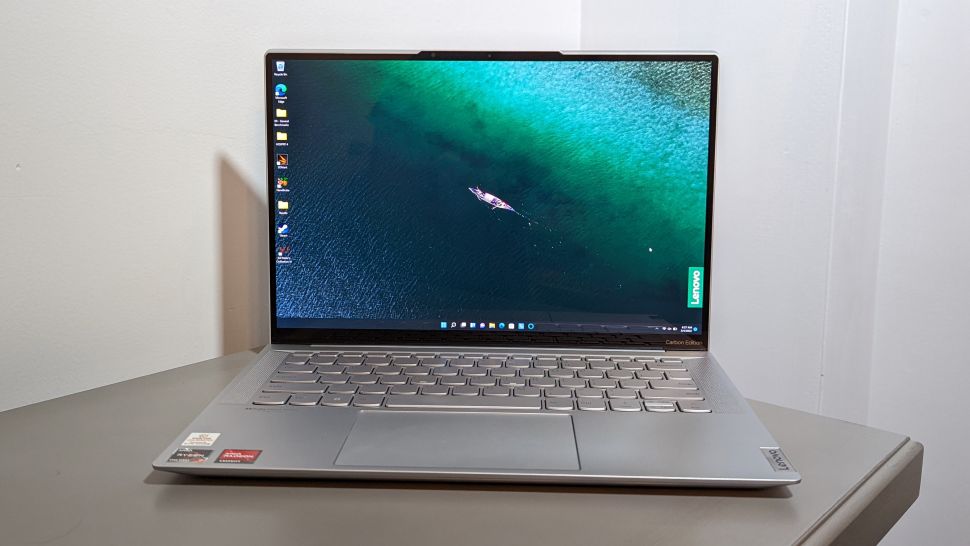
If you’re looking for a great all-around laptop that’ll get you through the day, the Lenovo IdeaPad Slim 7 Carbon may be the notebook for you. It features powerful performance combined with a gorgeous 14-inch OLED display, Dolby Atmos speakers and a comfortable keyboard. Between the Lenovo IdeaPad Slim 7 Carbon’s performance and gorgeous display, it’s hard to say no to this machine.
The Lenovo IdeaPad Slim 7 Carbon’s 14-inch, 2800 x 1800 OLED display is not only gorgeous, but it’s also super smooth thanks to its 90Hz refresh rate. The laptop has a comfy and punchy keyboard and great speakers. Even better, it dominated on our overall benchmark tests. It has a respectable battery life and is a great sub-$1,500 laptop.
See our full Lenovo IdeaPad Slim 7 Carbon review.
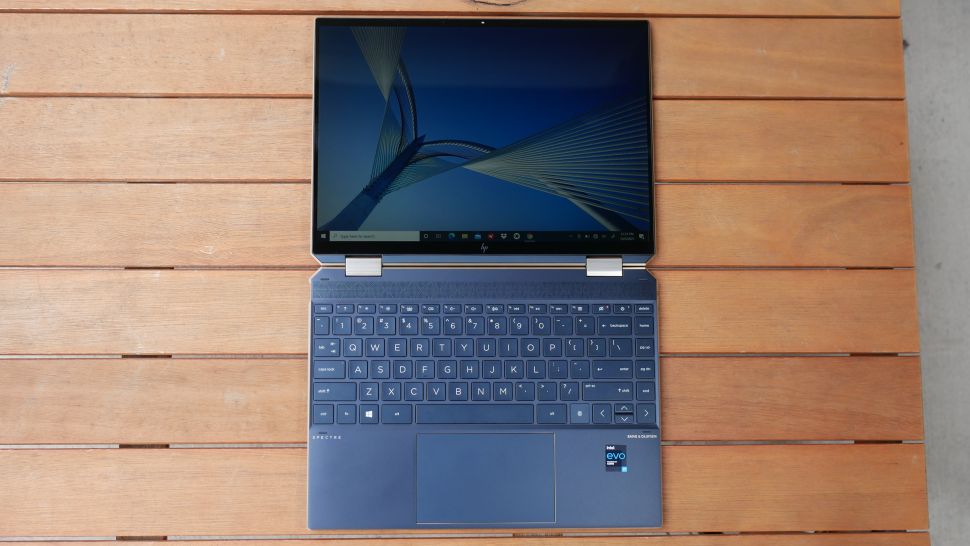
HP’s Spectre models have always stood out against uninspired competitors, but the new Spectre x360 14 is downright luxurious. The newest edition to HP’s premium 2-in-1 lineup combines a startlingly attractive chassis with gorgeous display options, fast performance and long battery life. It separates itself with a unique 3:2 aspect ratio and OLED panel option, a pair of features capable of enhancing work and play.
Not only does the Spectre x360 14 nail the basics, but it also comes with a USB-C rechargeable stylus and offers a decent selection of ports (USB Type-A and microSD included). Add to that a clicky keyboard and a large, silky touchpad and the Spectre x360 14 is one of the most impressive laptops we’ve ever reviewed.
See our full HP Spectre x360 14-inch review.
The Lenovo Duet 5 Chromebook is a significant departure from last year’s affordable Chromebook Duet. It still features a fabric rear case and keyboard cover like the previous model, but open it up and the 13.3-inch OLED display will make you check that sub-$500 price again. The changes run deeper than that with a dramatically improved Qualcomm Snapdragon 7c Gen 2 processor, while also delivering over 13 hours on a single charge.
While you can see the DNA of the Chromebook Duet in the Duet 5, it’s an astounding transformation, more reminiscent of a Pokemon evolution than a natural generational upgrade. The larger display also allows for a full-size keyboard, which is a night and day difference from the original Chromebook Duet’s Lilliputian keys. From the vivid OLED display to the over 13 hours of battery life, you won’t find a Windows 11 laptop that comes close for under $500.
As long as you are willing to live the Chrome OS life, and aren’t trying to run Linux on it, the Lenovo Chromebook Duet 5 belongs on the shortlist for anyone in the market for a 2-in-1 Chromebook.
See our full Lenovo Duet 5 Chromebook review.
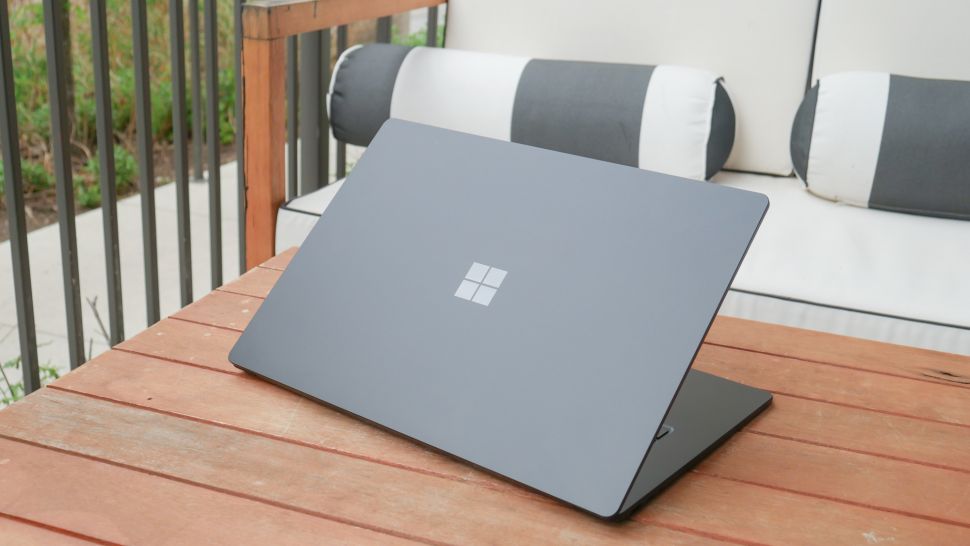
(opens in new tab)
The Surface Laptop 4 proves, a few tweaks are sometimes all that’s needed to refine a not-quite-there-yet product like its predecessor. Our biggest complaints with the previous model, the subpar speeds and endurance, were addressed with the new chips. With those major drawbacks resolved, the 15-inch Surface Laptop 4, with its sleek design, colorful display, and excellent keyboard and touchpad, finally shines. It should be on every shopper’s shortlist as one of the best laptops on the market.
The Surface Laptop 4 addresses the major flaws we found in the Surface Laptop 3 by delivering faster performance and longer battery life. With the right CPU, the Surface Laptop 4 has all of a sudden become a laptop with very few downsides. The sleek, sturdy design is as stylish as ever, the 15-inch panel is bright and vivid, and the keyboard and trackpad are darn-near class-leading.
See our full Microsoft Surface Laptop 4 (15-inch, AMD) review.
Why trust Laptop Mag
Laptop Mag has been testing and reviewing laptops for three decades. We test over 150 different models per year, subjecting each system to a series of rigorous benchmarks that provides a complete picture of performance, battery life and usability.
Our expert reviewers also use each product to see how it looks and feels in everyday situations. Because we see so many different notebooks, we can compare each to its direct competitors and give you an idea of how it stacks up to the average laptop in its price band.
How we test laptops
Laptop Mag has been testing and reviewing laptops for three decades. We test over 150 different models per year, subjecting each system to a series of rigorous benchmarks that provides a complete picture of performance, battery life and usability.
Our expert reviewers also use each product to see how it looks and feels in everyday situations. Because we see so many different notebooks, we can compare each to its direct competitors and give you an idea of how it stacks up to the average laptop in its price band.
When we bring a laptop into our laboratory, our goal is to see how it would work if you brought it into your home or office. While we use a number of industry standard benchmarks such as Geekbench and 3DMark, we focus heavily on real-world tests that we have developed in-house.
To test endurance, the Laptop Mag Battery test surfs the web at 150 nits of brightness until the system runs out of juice. To judge pure processing power, we use a giant spreadsheet macro that matches 65,000 names with their addresses, a video transcoder that converts a 4K video to 1080p and the Geekbench 4 synthetic test. We measure graphics prowess with both 3DMark Ice Storm / Fire Strike and a series of actual game titles.
We use a colorimeter to measure screen brightness and color gamut while other instruments help us determine a laptop’s key travel and ambient heat. See this page on How We Test Laptops for more details on our benchmarking procedures.
How to find the right laptop
When shopping for a laptop, there’s a lot to consider. To help you choose a system, we’ve put our up-to-date list of favorite notebooks above, along with five points to keep in mind when choosing a system.
Budget: What you get for the money.
You can find good cheap Windows laptops and high-quality Chromebooks for under $500. However, better mainstream laptops usually cost more than $700 and premium Ultrabooks can run over $1,000. The best gaming laptops can cost $2.000 and up, but you can play the latest titles at decent frame rates on gaming laptops under $1,000.
Screen Size: 12 to 14 inches for Portability
Knowing a laptop’s screen size tells you a lot about its portability overall. If you want to use your computer on your lap or carry it around a lot, go for one with a 12, 13 or 14-inch display. If you want to use the computer on tables and desks and won’t carry it around much, a 15-inch model may give you more value. Some gaming rigs, media machines and workstations even have 17 or 18-inch screens, but those are hardest to carry.
2-in-1 or Clamshell?
More and more of today’s laptops are 2-in-1s with screens that either bend back 360 degrees or detach so you can use them as tablets. If you like the idea of using your laptop in slate mode for drawing, media consumption or just using it standing up, a 2-in-1 could be for you. However, you can often get better features or a lower price by going with a traditional clamshell-style laptop.
Battery Life: 8+ Hours for Portability
Unless you only plan to use your laptop on your desk, battery life matters. Even within the home or office, having plenty of juice enables you to work on the couch or at the conference table, without being chained to the nearest outlet. For the best portability, we recommend getting a laptop that lasted over 8 hours on the Laptop Mag Battery Test. The longest-lasting laptops endure for over 10 hours.
Specs: 1080p / Core i5 / 8GB Are Best Bets
You can spend a lot of time delving into specs, but here are the key components to think about. If you just want really good mainstream performance, go for a Core i5 CPU, 8GB of RAM, a 256GB SSD and a 1080p screen.
- Screen Resolution: Unfortunately, 66 percent of consumer laptops and 51 percent of business systems have low-res screens. If at all possible, get a display with a 1920 x 1080 (aka 1080p or full HD) or higher resolution.
- CPU: An Intel Core i5 provides good mainstream performance. Some budget systems will come with Core i3, Celeron or Pentium CPUs which are good enough for basic tasks, but not heavy mutltiasking. Get a Core i7 or a quad core processor (serial number ends in HQ or HK) for gaming or high-end productivity tasks such as video editing and 3D modeling.
- RAM: 8GB is ideal for most users. 4GB is acceptable for budget systems. Secondary laptops and Chromebooks may have less.
- Storage: Unless you’re a gamer or a power user, 256GB of internal storage is probably enough. If at all possible, get an SSD (Solid State Drive) rather than a hard drive, because it’s going to make your entire computer a lot faster.
- Graphics Chip: Gamers and creative professionals need to do some research and figure out which discrete GPU is good enough to run their favorite software. Everyone else will be happy with the built-in Intel HD Graphics that come on the CPU.

